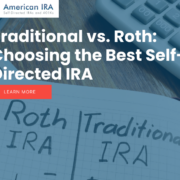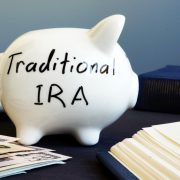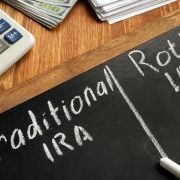Self-Directed Traditional IRA Tips
The Traditional IRA is the oldest style of retirement account available in the United States. And for that reason, many people assume they know all there is to know about the Traditional IRA. But you may be surprised by what you can accomplish in one of these accounts. For example, you can use a Self-Directed Traditional IRA to put aside retirement funds towards a wide range of retirement asset classes, such as precious metals, private company stock, or even real estate. The only catch is: you have to know what you can do with one of these accounts! Let’s explore some tips that should help shed light on what you can accomplish with a Self-Directed IRA.
Tip #1: Do Your Research
As the old saying goes, knowledge is power. That’s especially true in the world of financial planning. There are some amazing things you can do with a Self-Directed Traditional IRA, for example—but you can’t do them until you know it’s even an option. And the more options you know about, the more likely it is that you’ll find the option that works out best for you.
This is especially important with Self-Directed Traditional IRAs, because with a Self-Directed IRA, you’ll work with a Self-Directed IRA custodian who doesn’t make the decisions for you. You’ll be the one taking control over your financial future in this situation. And understanding that means taking more responsibility into your own hands. Do your research to know what you can do with a Traditional IRA, what you can invest in with one of these accounts, and how you can put it all together to create a retirement plan that works for you.
Tip #2: Know Your Limits
Just as it’s important to do your own research on what you can do, you’ll have to understand what you can’t do as well. For example, there are contribution limits with the Self-Directed Traditional IRA that you’ll have to keep in mind. You can’t expand these contribution limits by opening multiple Self-Directed Traditional IRAs, either, which is why so many investors stick to one.
These aren’t the only limits that you’ll have to be aware of. For example, you’ll also want to be aware that you can’t use your retirement assets for your personal benefit. That includes transactions like buying a piece of real estate and then living it—doing so would constitute an early withdrawal from the account, because you’re using your real estate instead of keeping it in the account for tax benefits. You not only lose the tax benefits, but then have to pay penalties and fees.
Tip #3: Work with the Best
When you have a Self-Directed Traditional IRA, the custodian you work with will help define what you can and can’t do. That’s why it’s so important that you seek out a Self-Directed IRA administration firm with a long history of working as a custodian on these types of accounts. You should also work with a Self-Directed IRA custodian capable of offering services for the types of assets that you want to invest in. For example, when you work with American IRA, we make it possible to invest in a wide range of asset classes, including precious metals, real estate, and more. This opens up all sorts of retirement investing options when you use a Self-Directed Traditional IRA.
Interested in learning more about Self-Directed IRAs? Contact American IRA, LLC at 866-7500-IRA (472) for a free consultation. Download our free guides or visit us online at www.AmericanIRA.com.











